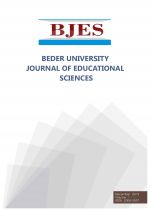
The Educational Values of Guaku spring, Bogov� Waterfall, and Pirogoshi Cave, from Landscape to Learning Natural Heritage
Abstract
Natural monuments, as important elements of natural heritage, offer not only scientific, aesthetic, conservation, and touristic values, but above all, they carry significant educational potential. This paper aims to examine the role of natural monuments as important educational resources for environmental and scientific education, focusing on three selected sites: Guaku spring, Bogov� waterfall, and Pirogoshi cave. All three natural monuments are located within the territory of Skrapar municipality and represent diverse examples of landform features. Guaku spring effectively illustrates karstification processes and the value of water resources within ecosystems. Bogov� waterfall represents the dynamics of erosive processes in mountainous landscapes, while Pirogoshi cave serves as an environment for studying internal landform morphology and speleological formations. The study is based only on the analysis of scientific and educational values as defined through the GAM method (Geosite Assessment Method, Vujivivc et al., 2011), which was developed to comprehensively evaluate the values of various geosites. This method includes five groups of values, each with its own set of indicators. Field observations, literature review, and interviews with experts in the field, conducted in accordance with the GAM method, highlight that these natural monuments function as natural laboratories for understanding geological, geomorphological, and geographical processes. Moreover, they contribute to raising awareness and promoting education on environmental protection and conservation. Meanwhile, the physical geography curriculum in pre university education includes learning outcomes related to natural heritage, enabling a connection between educational demand and the illustrative, demonstrative, and cognitive potential of local geography. Field-based didactic practices at these sites help build sustainable and easily comprehensible knowledge, especially for pre-university students, whose educational institutions are located near these high-value natural sites.
Keywords
Educational Values, Field-Based Learning, Natural Heritage, Curriculum Education, Learning Outcomes
Authors
Xhuliana ZDRAVA, Jostina DHIMITRI
Download Article

This work is licensed under a Creative Commons Attribution 4.0 International License.
Warning: mysql_free_result() expects parameter 1 to be resource, null given in /var/www/journals/bjes.beder.edu.al/article.php on line 45